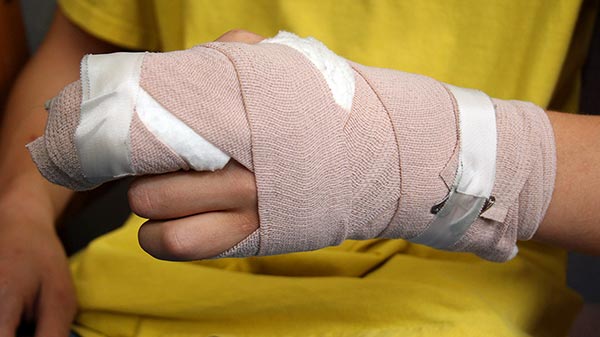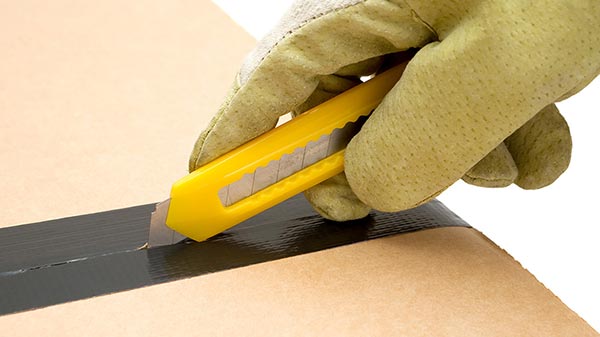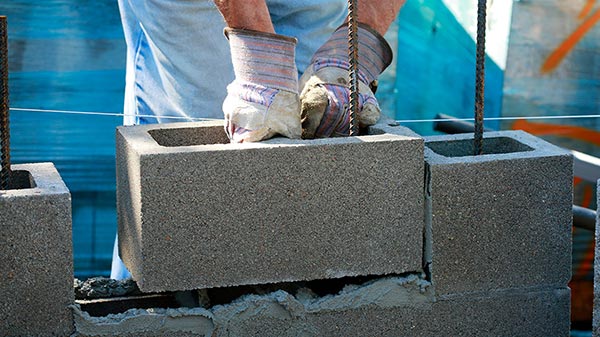Preventing Hand Injuries in Restoration Work

Photo credit: Getty Images.
Imagine trying to function in your daily life with only one hand. If you have ever broken a finger or hand and been forced to function with one hand, you quickly realize how hard it is. Now think about a restoration tech working through an average day with one hand. It would be severely limiting. Then there is the possibility of becoming frustrated and somehow using the injured hand, which could injure it more. You get the picture. Hand injuries are very limiting.

Case in point, I’ve witnessed my wife and her sister impacted by hand irritation from the chemicals they use as hairdressers. In recent years, they have developed skin irritations from hair products they use. Some days they simply forget to put on gloves. Their skin then reacts to the chemicals, and that limits the services they can perform for the next few days.
In contrast to these realities, hand injuries are one of the most common injuries in restoration work. In fact, Safety + Health from the National Safety Council states that hand injuries are the top preventable workplace injury.
OSHA Regulations
The U.S. Occupational Safety and Health Administration (OSHA) requires employers to require personal protective equipment (PPE) and reduce the hazards anywhere there is exposure.1 OSHA also expects employers to pay for most PPE, including gloves.2 Beyond that, there is not an abundance of detailed guidance from OSHA on hand protection (My opinion is that’s likely because of the vastly different hazards across industries and even jobsites). In these situations, I recommend turning to information from industry voluntary standards (ANSI), professional publications and safety professionals. This article combines information from all three.
Hand Injury Prevention
Let’s review some successful methods I have observed to prevent hand injuries.
Coach Avoiding Contact
The first method is as simple as keeping your hands away from the hazard. That applies to chemicals, hot or cold surfaces, and rotating hand tools. It includes hand positioning to keep from striking your hands against objects. A common example to avoid striking hands is the positioning of your hands when moving equipment or carrying supplies so they don’t strike objects as you move/carry them through a building. Experienced supervisors can help coach this most basic prevention method by observing hazards at jobsites and make employees aware of the hazards. A Job Hazard Analysis form also helps communicate the hazards and injury prevention.
Implement Chemical Substitution
The second method involves using a chemical that has less hazards than a previously used chemical. Since we use our hands so much during restoration work, a chemical with little or no hazards can lessen the severity of skin contact, or potentially eliminate the need for PPE. This substitution method is much less challenging than in the past. For instance, there are disinfectants available that have natural oils as the primary ingredients, have little-to-no skin hazards and have proven to be very effective. Jeff Heyd wrote a great article, “The Evolution of Green,” in July 2019 for R&R that not only explains the benefits of “green” products but also challenges us to consider upgrading to these modern products.3
Wear Modern Gloves
The third method is gloves. This method can be less effective than eliminating the hazard; however, I have found that wearing PPE is necessary in the restoration industry. Our hands will contact chemicals, we will strike our hands against something or something will strike our hands.
Supervisors and managers can make this easier by evaluating job hazards and specifying the best gloves to minimize/eliminate the hazards in the Job Hazard Analysis. Let’s now dive into glove choices.
Choosing the Right Glove
First, we need know what the potential hazards are. The most common hand injury hazards I have observed in restoration work are:
- Rashes, burns and irritations from chemicals
- Cuts
- Abrasions
Let’s address the gloves needed for these three common hazards.
Rash/Burn/Irritation
Aggressive chemicals, once on the skin, typically cause some type of damage. Injury can appear well after exposure (e.g. the next day or the day after that). To understand if you have a chemical with skin hazards, you’ll need to look at the Safety Data Sheet (SDS); specifically, Section 2 Hazards and Section 8 Personal Protection. (Refer to my previous column on SDSs). If you don’t understand the SDS recommendations, contact the chemical manufacturer or a safety professional.

Cut Resistance
Modern cut resistant gloves offer great dexterity and protection. Some also offer chemical resistance.
These gloves continue to develop at a frequency where you should routinely evaluate new selections for more advanced gloves at prices equivalent or lower than you currently pay.
Be aware they are cut resistant, not cut proof! Call your PPE supply company or a glove manufacturer to evaluate your choices and possibly get free samples to try out. There is an entire science and rating scale for cut protection – your representative can help you through the choices.
Finally, teach employees how to cut safely; cut away from themselves, use sharp blades and don’t use great force. Gloves alone cannot protect them from all conceivable situations.

Abrasion Resistance
I believe this benefit is often overlooked. Simple abrasions that penetrate layers of skin open the door for infections and pathogens to enter your body. When you discuss cut resistance with a glove supplier, be sure to also cover abrasion resistance. There is also a science and rating system for abrasion resistance. A knowledgeable representative can lead you through the selection process.

Training and Glove Implementation
I have already mentioned training employees on avoiding hand contact and safe cutting practices. Additional training should identify what gloves should be worn for what tasks and how to care for gloves. I suggest establishing a company policy on when gloves should be worn; that can be done in your safety manual and reinforced at job sites with a job hazard analysis.
Additionally, set company policy on issuing gloves and glove care. While the prices of advanced gloves have come down significantly, they are still not inexpensive. They should be managed and issued differently than cheap, disposable gloves.
Note: OSHA does specify that, “The employer must pay for replacement PPE, except when the employee has lost or intentionally damaged the PPE.”
In this sense, gloves are not much different than our respirators and should be managed just the same. They should be properly stored at the end of the day, cleaned (washed) when dirty and treated like the valuable commodity that they are. Train employees on these concepts upon hire and at least annually, to avoid out-of-control glove costs.
Summary
Hand injuries can have a significant impact on an employee’s personal and work life. It is critical for restoration companies to understand how to minimize these injuries. I have identified common hand hazards, three injury prevention methods, glove protection properties, training topics and glove management basics. Modern glove features have removed excuses to not wear gloves. Restoration companies should take advantage of this and work to make gloves an everyday part of their work.
Resources:
- Selecting appropriate hand protection, Safety + Health, National Safety Council
- Hand safety programs, Safety + Health Magazine, National Safety Council
- Personal Protective Equipment, OSHA 3151-12R 2004
- All About Cut Resistant Glove Levels, MCR Safety
References:
Looking for a reprint of this article?
From high-res PDFs to custom plaques, order your copy today!







